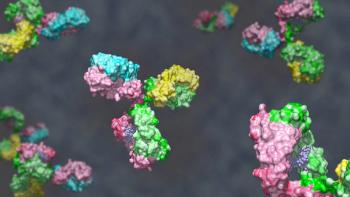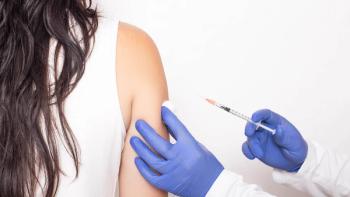
- BioPharm International-12-01-2020
- Volume 33
- Issue 12
Meeting the Challenges for Scaling Up Vaccine Manufacturing Systems
Scaling needs for potential COVID-19 vaccines depend not only on capacity, but also on supply chain challenges and technological hurdles.
One of the critical hurdles in the path of bringing potential COVID-19 vaccines to market is the ability to supply the capacity needed to meet global demand for the vaccines that receive regulatory approval. Quick, reliable, cost-effective, and good manufacturing practice (GMP)-compliant manufacturing scale-up from clinical level to commercial level is especially important. Developing prudent strategies and taking correct action can allow vaccine manufacturers to position themselves for adequate scale up of COVID-19 vaccine manufacturing upon regulatory approval.
Technical hurdles
Technical challenges to scaling up vaccine manufacturing include having the infrastructure for a rapid ramp-up and having the capability to meet temperature-sensitive needs, the latter of which is a specific requirement for some of the COVID-19 vaccines in development.
“Many of the vaccines have been developed quickly and appear to be very temperature sensitive. As such, until data for the various manufacturing steps can be obtained, scale up of the manufacturing process could be restrained to ensure that manufacturing can be completed within time limitations,” notes David Powell, vice-president, Business Development, Grand River Aseptic Manufacturing.
“As clinical trials are finalized, the ability to rapidly pivot to produce new products at commercial scale and ramp up to meet production demand will severely test technology infrastructures,” says Kari Christensen, business development manager, Life Sciences Initiative, Honeywell Process Solutions. Because time is of the essence, Christensen further explains, building a new facility is not a viable option in this situation. Manufacturers will therefore need to secure production facilities that are either currently idle, can be rapidly repurposed or expanded, or are modular and dropped on site.
“In all of these scenarios, the production equipment itself will also present challenges. Interruption of availability or very long lead times for procuring new process equipment create significant integration and validation challenges. By intentionally creating an adaptable process control approach, manufacturers are in a position to help mitigate the effect this will have on the project timeline,” Christensen states.
Supply chain management will be another challenge faced by COVID-19 vaccine manufacturers. “Supply chain management is a challenge when product temperature requirements are still being established. Two to eight degrees Celsius storage is readily available; however, sub-zero storage capacity is typically limited, especially for finished product storage,” notes Powell.
Race against time
Time sensitivity is, in this case, also a major issue that vaccine manufacturers face as they race to get a product to market amid the current pandemic. Because of the time pressure, it is necessary for commercial-scale parameters to be developed quickly, notes Christensen. “The luxury of time is usually afforded during the good automated manufacturing practice (GAMP) process. This challenge is forcing production automation suppliers to become more flexible in their solution architecture and break free of legacy constraints to support more modular manufacturing,” she says.
Automation is an effective tool to support manufacturers in meeting the industry’s time-sensitive goals.
“By overlaying a preliminary process control system during clinical trials, a manufacturer can achieve several distinct benefits. First, process automation parameter development can begin at an earlier stage,” Christensen adds. “For example, overlaying a preliminary supervisory control and data acquisition (SCADA) system can streamline data harvesting and analysis and potentially expedite electronic submittal for final regulatory approval. Additionally, data stored during this process can be used to determine engineering parameters and convert the preliminary process control to a commercial scale. Most importantly, certain SCADA solutions lend themselves to being seamlessly evolved into a full-scale distributed control system (DCS).” Indeed by paralleling the production system development with the clinical trials, production of promising vaccine candidates can commence while final agency approval is being sought.
Christensen also explains that, if there is legacy equipment that will need to be incorporated into a new automation strategy, an orchestration layer can be used to integrate the process equipment and control systems. “A layer consisting of a unit operation controller with embedded ISA S88 functionality and a batch human machine interface (HMI) can be used to directly communicate with a controller or IO panel on an equipment skid to achieve real-time visibility across the entire process, centralized recipe management, and batch reporting,” she states.
Furthermore, as demand for a new vaccine becomes clearer or changes, having adaptable input–output (IO) in place as part of the process control system can be used to make more nimble pivots to production levels, creating a continuously flexible control environment going forward. Christensen says Universal IO, for example, allows remote and automatic changes to IO configuration. This enables “late binding,” or late-stage commissioning, in addition to quick, easy changes once a production automation system is in place. Simple software changes make flexible, modular manufacturing more attainable.
“By leveraging adaptable and elastic control platform features, manufacturers are able to meet the flexibility demands from design to implementation to scale-up needed in this current rapidly changing environment,” Christensen says.
In addition, a data center or software-as-a-service approach would be conducive to a virtual, remote engineering design, which can be deployed for offline testing and validation to avoid production delays as new equipment is ramped up or integrated into an existing facility, or if production levels or formulations change, Christensen asserts.
Devising strategy
Developing a strategic scale-up plan is important in general but will be especially crucial under the current restrictions put in place during the COVID-19 pandemic. Vaccine makers will need to assess their operations and capabilities in order to position themselves for ready deployment and rapid scale-up.
Identifying and qualifying solutions for cold chain management in advance (e.g., additional proximal third-party warehouse space or temporary refrigeration or freezer storage) is an important part of that strategy, as is stockpiling critical single-use consumables and qualifying additional vendors of single-use technologies ahead of commercialization, notes Powell.
Christensen, meanwhile, suggests implementing the following methodology: reuse existing operating infrastructure when possible; leverage only seasoned operators to reduce time to familiarize themselves with a new system; utilize a batch HMI for early and ongoing operations; and develop a timeline-based visualization, which allows for faster understanding and insights at the beginning of a new process start-up. In addition, cloud-based engineering and project integration can reduce validation and time to start up; pre-developed scenarios for GAMP production builds speed up implementation; and flexible automation engineering, such as flexible IO and orchestration, can enable flexible and modular manufacturing as demand or formulation changes are needed.
Biopharma sets the stage
Biopharma majors have also been tackling issues of capacity scale up in preparation for COVID-19 vaccine launches. GlaxoSmithKline (GSK), for instance, which manufactures a vaccine adjuvant intended to be used with a COVID-19 vaccine, is investing in expanding manufacturing capacity for its adjuvant system. The company intends to manufacture one billion doses in 2021 to support the development of multiple adjuvanted COVID-19 vaccine candidates (1).
GSK’s adjuvant technology was demonstrated in the last flu pandemic to reduce the amount of vaccine protein required per dose. Reducing the amount of vaccine required per dose allows more vaccine doses to be produced, the company has noted. An adjuvant can also enhance immune response and has been shown “to create a stronger and longer-lasting immunity against infections” (1).
GSK’s adjuvant system will be manufactured, filled, and finished at sites in the United Kingdom, the United States, Canada, and Europe, the company has reported. The company is also in discussions with governments and global institutions to secure funding for production and supply of the adjuvant.
Pfizer, meanwhile, had begun taking pre-emptive steps in May 2020 to scale up its manufacturing operations to ensure it could supply a COVID-19 vaccine when the time comes. The steps the company took included: exchanging technology for rapid facility, equipment, and process design planning; ordering materials, which allowed the company at that time to begin the manufacture of potential vaccine candidates; establishing two parallel supply chains for redundancy; modifying facilities and re-prioritizing capacity for COVID vaccine manufacture; recruiting and training staff for operations support and flexibility; and investing at risk (i.e., with potential for financial loss) for quick production of many doses when vaccine is available (2).
Pfizer, in conjunction with BioNTech, is currently set to supply the European Union with 200 million doses of its mRNA vaccine candidate, BNT162b2, after reaching an agreement with the European Commission in mid-November 2020 (3). This agreement followed Pfizer’s announcement that BNT162b2 showed promising results in a Phase III clinical study, in which the vaccine demonstrated an efficacy rate above 90% at seven days after a second required dose (4).
References
1. GlaxoSmithKline, “GSK Announces Intention to Produce 1 Billion Doses of Pandemic Vaccine Adjuvant in 2021 to Support Multiple COVID-19 Vaccine Collaborations,” Press Release, May 28, 2020.
2. Pfizer, “Scaling Up to Manufacture and Supply a Covid-19 Vaccine, If Approved,” Press Release, May 5, 2020.
3. Pfizer, “Pfizer and BioNTech Reach an Agreement to Supply the EU with 200 Million Doses of Their Bnt162b2 mRNA-based Vaccine Candidate Against Sars-Cov-2,” Press Release, Nov. 11, 2020.
4. Pfizer, “Pfizer and BioNTtech Announce Vaccine Candidate Against Covid-19 Achieved Success in First Interim Analysis from Phase 3 Study,” Press Release, Nov. 9, 2020.
About the author
Feliza Mirasol is the science editor for BioPharm International.
Article Details
BioPharm International
Vol. 33, No. 12
December 2020
Pages: 46–50
Citation
When referring to this article, please cite it as F. Mirasol, “Meeting the Challenges for Scaling Up Vaccine Manufacturing Systems,” BioPharm International 33 (12) 2020.
Articles in this issue
about 5 years ago
Prepping Fill/Finish Systems to Ensure Quality Outputabout 5 years ago
Virus-like Particles as Therapeutic Moieties of the Futureabout 5 years ago
Using Automated Inline Dilution to Ease Bottleneckingabout 5 years ago
Updating Viral Clearance for New Biologic Modalitiesabout 5 years ago
Getting More Scientific About Cleaning Validationabout 5 years ago
What’s New in Lab Data Management Technologiesabout 5 years ago
Pandemic Brings Major Changes to FDA and Drug Development in 2020about 5 years ago
Biopharma, People, Perseverance, and Hopeabout 5 years ago
Impact of Pandemic on Permanent ProceduresNewsletter
Stay at the forefront of biopharmaceutical innovation—subscribe to BioPharm International for expert insights on drug development, manufacturing, compliance, and more.




